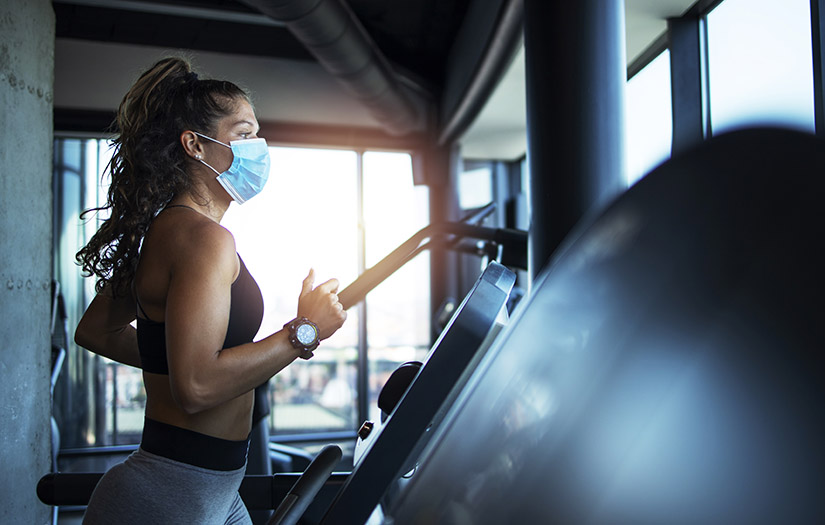By Sam Arnold
Throughout the pandemic, you have likely spent more time at home by yourself than you ever expected or wanted to. You almost certainly have needed a lift at one time or another. Given all the discussion of precautions, illness, and death, you may have found yourself thinking more about your health, morbidity, and mortality. This is normal.
Depending on your age, experiences, and phase of life, mortality may mean something entirely different for you. Death may be the last thing on the mind of a single 23-year-old straight out of college. And it is at the forefront of a parent who has just lost their mother or father.
The average lifespan in the United States is 78.6 years. Regardless of your age, retirement is something we all talk about, plan for, and hopefully have a chance to enjoy on our terms.
THE DEFINITION OF HEALTHSPAN
Healthspan refers to the period of a person’s life during which they are generally healthy and free from severe or chronic disease. This definition varies from the more traditional focus of medical community – ‘life span’ – which spans the entirety of a human life, including chronic illness.
THE AVERAGE HEALTHSPAN IN THE U.S.
According to data from the U.S. Census Bureau, the average retirement age across the U.S. is 64.4. That means, on average, Americans have 14 or so years to enjoy retirement. Not bad, right? That is until you factor in that the average healthspan in the United States is just 66 years of age.
5 WAYS TO INCREASE YOUR HEALTHSPAN
Now let’s get into some actionable steps for not only improving the length of your healthspan:
- Drink plenty of water
- Get adequate sleep
- Reduce time spent sitting
- Do strength training
- Build a community and support system
#1 DRINK WATER
Our bodies are primarily composed of water, about 50-70% bodyweight. Water aids in ridding waste products, regulates temperatures, lubricates joints and tissues, and is so much better than Gatorade (not necessarily, but that’s another discussion).
We need a significant amount of water regularly to maintain healthy functioning – eight glasses a day is a commonly used marker. Remember that we get fluids from the foods we eat as well. Simple ways of gauging your hydration include your thirst levels and the color of your urine. If you are rarely thirsty and your urine is colorless or light yellow, you are probably doing a good job.
#2 GET THE RIGHT AMOUNT OF QUALITY SLEEP
Sleep is an essential time for our bodies and brains to recuperate: breathing, heart rate, and metabolism decrease. Memories are solidified. Tissues are repaired. Dreams are had.
The average adult needs between 7-9 hours of sleep each night. If you fall far outside of this window, you may want to assess your sleep habits. Short sleepers (less than 7 hours) have a 12% greater risk of dying, while long sleepers (more than 8-9 hours) have a 30% greater risk of dying. Sufficient exercise may be one of the best sleep aids available on the market.
Find a great resource on the consequences of not getting adequate sleep by following the link.
#3 REDUCE TIME SPENT SITTING
Too much time spent sitting is a health risk distinct from getting too little exercise. Yes, even if you are reaching the recommended 150 weekly minutes of moderate-intensity activity, the amount of time you spend sitting down can decrease your quality of life and overall healthspan. Set yourself hourly (or more frequent) reminders to stand up and move your body. Even just the act of standing for a minute or two can do wonders for your health.
#4 STRESS YOUR SYSTEM WITH STRENGTH TRAINING
Strength training is one of the most effective ways of improving health and wellness. Intentional and systematic application of physical stressors to your body (aka strength training) decreases the risk of injury while increasing your metabolism.
Not only does having more strength make everyday activities easier, but it increases your body’s ability to withstand stress. Consistently applied stress develops a robust body capable of handling whatever life throws your way.
#5 BUILD A COMMUNITY
Perhaps one aspect that no one will overlook after this year is the value of a solid community. Social support is a key component for the adoption and maintenance of healthy habits such as exercise.
Maintaining healthy supportive relationships has a protective effect on our healthspan. Athletes have a greater risk of injury and depression when they do not feel supported properly.
Divorced individuals experience a 23% higher risk of dying early. And there is strong evidence linking social isolation, depression, and a higher risk of falls in older adults.
YOU HAVE THE POWER
Here are three major takeaways from this blog.
- First, death should never be forgotten as it is one of the only certainties in life. Memento mori.
- Second, if your circumstances afford it, it makes sense to try to retire as early as possible.
- And most importantly, it makes sense to extend the healthspan and maximize the healthy time free from illness and medication. Keep reading for some ways to knock this out.
All this is to say that no one is going to be more motivated to take care of your health and well-being than you! The good news is you have all of the knowledge needed to successfully improve your healthspan and set yourself up for a successful life.
If you need a little nudge in the right direction or just want to join an incredibly supportive community – give us a shout at SHAPE Training.
REFERENCES
Arnold S. Start Moving to Stress Less. Made In PGH. Published November 4, 2020. Accessed January 11, 2021. https://madeinpgh.com/lifestyle/shape-stress-less/
Miller BJ. Opinion | What Is Death? The New York Times. https://www.nytimes.com/2020/12/18/opinion/sunday/coronavirus-death.html. Published December 18, 2020. Accessed January 11, 2021.
Laurence E. The average American life expectancy is 78 years, but our ‘healthspan’ is only 66—here’s why. www.msn.com. Published February 8, 2020. Accessed January 11, 2021. https://www.msn.com/en-us/health/wellness/the-average-american-life-expectancy-is-78-years-but-our-e2-80-98health-span-e2-80-99-is-only-66-e2-80-94here-e2-80-99s-why/ar-BBZMa87
Csiszar J. The Average Retirement Age in Every State. www.msn.com. Published March 17, 2020. Accessed January 11, 2021. https://www.msn.com/en-us/money/retirement/the-average-retirement-age-in-every-state/ss-AAIO2b6
Cappuccio FP, D’Elia L, Strazzullo P, Miller MA. Sleep duration and all-cause mortality: A systematic review and meta-analysis of prospective studies. Sleep. 2010;33(5):585-592. doi:10.1093/sleep/33.5.585
Lane AM. Sport and Exercise Psychology. Routledge; 2016:79.
Das Gupta D, Kelekar U, Rice D. Associations between living alone, depression, and falls among community-dwelling older adults in the US. Preventive Medicine Reports. Published online December 2020:101273. doi:10.1016/j.pmedr.2020.101273
THE AUTHOR

SAM ARNOLD
Sam Arnold, PES, CSCS, CSPS, CSC, has been in the healthcare, fitness, and sports performance fields for over 12 years. While studying Exercise Science at the University of Pittsburgh, he gained early exposure in physical and cardiac rehab settings as well as pediatric and adult weight management research facilities. Since 2015, Sam has been co-owner and Training Development Director at SHAPE Training in Pittsburgh, PA. In May 2021, he will obtain his Masters of Science from the California University of PA in Performance Enhancement & Injury Prevention as well as Sport Psychology. You can find more about Sam and his work via IG: sam_shapes_training Sam.arnold@shapetrain.com www.shapetrain.com

